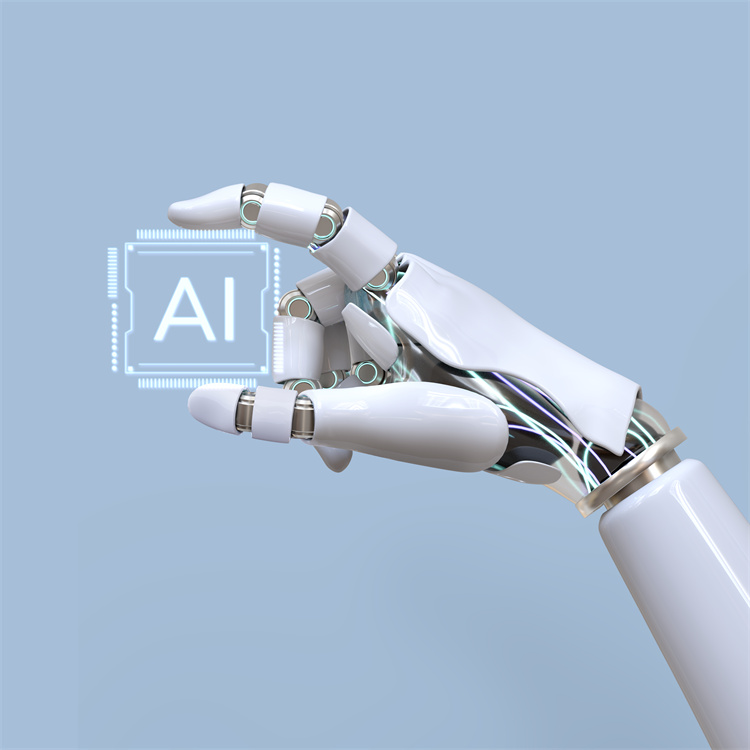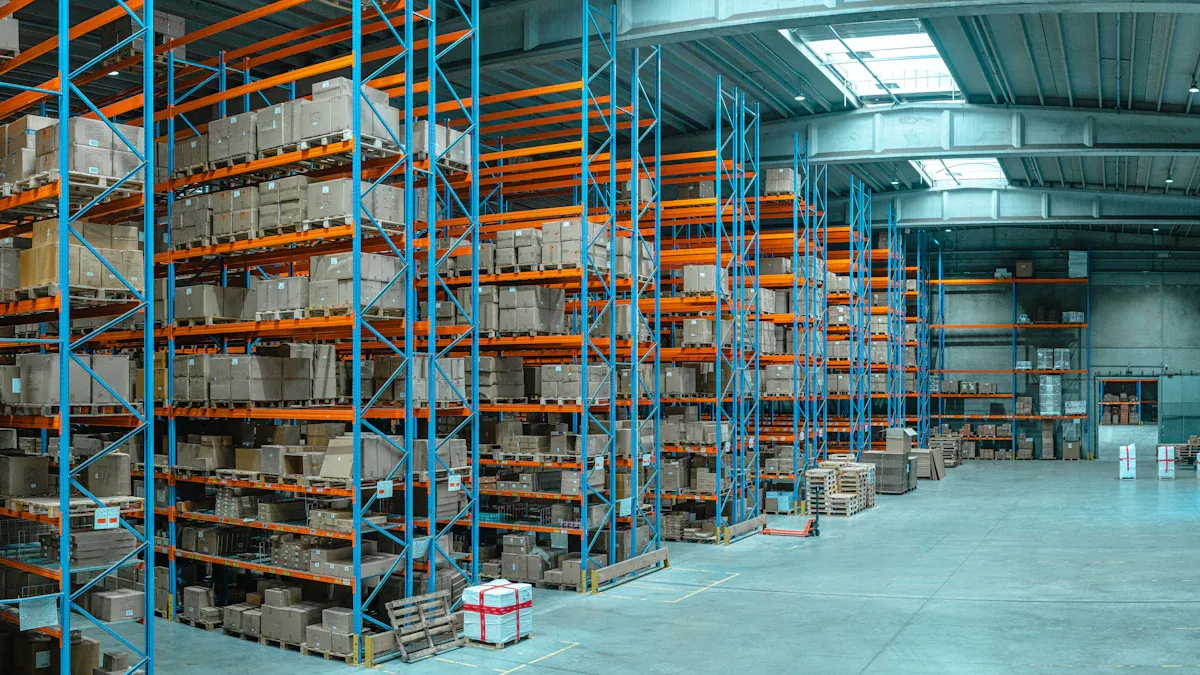AI-First Supply Chain Strategy and the obsolescence of traditional approaches

Businesses around the world face a dramatic shift. Leaders now see the power of AI-First Supply Chain strategies as essential for survival. Companies that hesitate risk falling behind as supply chains become more complex and digital. The numbers tell the story:
Metric / Statistic | Value / Change | Context / Impact |
|---|---|---|
$6.5B to $19.8B | 45.3% CAGR, rapid market growth | |
Logistics cost reduction with AI | 12.7% drop | McKinsey data, billions saved |
Inventory level reduction with AI | 20.3% drop | Significant operational savings |
AI-driven global supply planning by 2030 | 58% | 96% predictive accuracy |
SMB AI adoption in supply chains (2023 to 2025) | 18% to 47% | Sharp increase |
ROI from AI control towers vs traditional ERP | 307% vs 87% | Nearly 3x faster ROI |
67% of supply chain leaders already use AI for logistics and forecasting.
The global AI market in supply chain management grows at 45.3% each year.
Companies that do not use AI-First Supply Chain models risk losing their edge.
Key Takeaways
AI-First Supply Chain strategies use real-time data and automation to improve forecasting, reduce costs, and increase efficiency.
Traditional supply chains rely on old methods that cannot keep up with fast market changes, causing delays and higher expenses.
Companies adopting AI see faster deliveries, better risk management, and stronger customer satisfaction.
Transitioning to AI requires updating technology, training workers, and managing data carefully to succeed.
Leading businesses like JUSDA and JusLink show how AI-driven supply chains boost growth and help companies stay competitive.
Traditional vs. AI-First Supply Chain

Key Differences
Traditional supply chain models depend on historical data and fixed processes. These systems often use machine learning to analyze structured data for tasks like demand forecasting and inventory management. However, they struggle to adapt quickly when the market shifts. AI-First Supply Chain approaches change the game. They use real-time data from many sources, including weather, global events, and even social media. This allows companies to adjust forecasts and plans instantly.
AI-First models also make data more accessible. Employees can use natural language tools to ask questions and get answers fast. Generative AI helps explain complex data, so more people can make smart decisions. Companies like Amazon show how these advances lead to better forecasting, faster risk detection, and higher efficiency.
AI-First Supply Chain models automate tasks like route planning, inventory tracking, and compliance checks. They also improve sustainability by tracking emissions and verifying ethical sourcing.
A study shows that AI-driven supply chains cut costs, reduce errors, and manage inventory better than traditional systems. AI can spot problems early, predict equipment failures, and optimize warehouse layouts. These improvements help companies stay ahead in a fast-moving world.
Why Traditional Models Fail
Traditional supply chain models often fail because they cannot keep up with today’s demands. They rely on limited internal data and slow manual processes. When markets change quickly, these systems react too late. For example, a footwear company in Mexico struggled with slow production and poor coordination. Manual methods led to missed deadlines and lost profits.
Modern analytics reveal that traditional models lack the ability to process large amounts of real-time data. They cannot predict risks or adapt to sudden changes. This leads to overstocking, missed sales, and higher costs. Companies that stick with old systems fall behind competitors who use AI-First Supply Chain strategies.
Companies need supply chains that learn, adapt, and respond instantly. Only AI-First models deliver this level of agility and precision.
AI-First Supply Chain Benefits
Efficiency Gains
Companies that adopt an AI-First Supply Chain approach see remarkable improvements in how they operate. AI technologies like machine learning and predictive analytics help businesses work faster and smarter. These tools allow companies to predict demand more accurately and keep just the right amount of inventory. This means fewer empty shelves and less wasted stock.
AI-powered automation handles repetitive tasks, such as order processing and route planning, freeing up employees for more valuable work.
Predictive maintenance uses real-time data to spot equipment problems before they cause delays, keeping operations running smoothly.
AI helps optimize transportation routes, which leads to faster deliveries and lower shipping costs.
Companies use AI to analyze customer satisfaction data, helping them improve products and services quickly.
Top-performing supply chain organizations use AI and machine learning to optimize their processes at more than twice the rate of low performers. They also build stronger data security and privacy frameworks, which protect sensitive information and build trust with customers.
AI-First Supply Chain models also support sustainability. By reducing waste and optimizing energy use, companies lower their carbon footprint and save money. These improvements make supply chains more adaptable and responsive to sudden changes in the market.
Benefit | Impact |
|---|---|
Precise demand forecasting | Less overstock and fewer shortages |
Automated processes | Higher labor efficiency and fewer errors |
Real-time data analysis | Faster decision-making |
Optimized logistics | On-time deliveries and cost savings |
Sustainability improvements | Lower emissions and reduced waste |
AI-driven solutions also encourage innovation. Companies can experiment with new products and services, using real-time insights to guide their decisions. This flexibility helps businesses stay ahead of competitors and meet changing customer needs.
Risk Management
Managing risk is one of the biggest challenges in supply chains. Traditional methods often miss early warning signs and react too slowly. AI-First Supply Chain strategies change this by using advanced machine learning models to spot risks before they become problems.
AI systems analyze data from many sources, including social media and global news, to detect potential disruptions in real time.
Explainable AI tools help managers understand why certain risks appear, making it easier to take action.
Blockchain technology adds transparency and traceability, which strengthens risk controls and builds trust with partners.
Federated learning allows companies to predict risks together without sharing private data, improving accuracy and privacy.
AI-driven risk management strategies outperform traditional methods by enabling proactive, real-time identification of threats. These systems help companies avoid costly disruptions and keep their supply chains running smoothly.
AI models like Random Forest and XGBoost provide better predictions than older techniques. They help companies assess risks in specific locations, such as factories in low-cost countries, and make smarter sourcing decisions. Hybrid models combine different AI tools to improve credit risk control for financial institutions and manufacturers.
AI-First Supply Chain approaches also boost agility. Companies can quickly re-engineer their processes to handle unexpected events, ensuring business continuity even during crises. This level of preparedness is especially important for small and medium-sized enterprises that face greater risks.
JUSDA in Action
Real-World Results
JUSDA have transformed supply chain operations for global businesses. Their AI-powered solutions deliver faster, smarter, and more reliable logistics. For example, JUSDA helped leading Chinese manufacturers expand worldwide by building a digital platform that connects procurement, transportation, customs, and warehousing. This platform uses AI to predict demand, manage inventory, and track shipments in real time. As a result, companies reduced manual work, improved data accuracy, and cut costs.
Other industries have seen similar gains with AI. JetBlue Airways unified its data and optimized pricing and forecasting, which led to higher efficiency and customer satisfaction. Companies using AI-driven platforms report up to a 50% reduction in resolution time and a 37% improvement in first response time. JusLink’s intelligent agents automate order tracking and risk management, so teams can focus on growth instead of routine tasks.
Benefit | Result Achieved |
|---|---|
Inventory cost reduction | Lower holding costs |
Faster delivery coordination | On-time shipments |
Real-time risk alerts | Fewer disruptions |
Automated reporting | Quicker decision-making |

JUSDA Solutions
To provide you with professional solutions and quotations.
Customer Success
JUSDA’s customers experience real, measurable success. Manufacturers using JusLink’s AI tools now manage global supply chains with greater transparency and speed. One customer expanded into Southeast Asia and overcame customs and logistics challenges by using JUSDA’s platform. The company saw improved efficiency, lower inventory costs, and faster market entry.
Across industries, AI-driven solutions boost customer satisfaction and loyalty. Surveys show that 80% of customers give positive feedback on AI assistance. Companies see up to a 36% increase in repeat purchases and a 15% rise in revenue from AI-powered personalization. Telenor’s AI virtual agent improved customer support and met ROI goals in just one year. Data also shows that resolving issues at first engagement can prevent 67% of customer churn. Customer-centric companies become 60% more profitable and see more repeat business.
JUSDA and JusLink prove that AI-driven supply chains are not just the future—they are the key to global growth and customer success today.
Transforming Operations with AI

Forecasting & Inventory
AI transforms forecasting and inventory management into powerful engines for growth. Companies now use AI agents to automate inventory tracking, reducing manual errors and triggering replenishments at the right time. JusLink’s intelligent agents analyze sales data, market trends, and even weather patterns to predict demand with high accuracy. This approach helps businesses avoid overstock and stockouts, saving money and keeping customers happy.
AI-driven forecasting uses advanced models like ARIMA, Holt-Winters, and LSTM to adapt to changing demand.
Predictive analytics allow companies to simulate different scenarios and plan for sudden changes.
JusLink’s replenishment assistant generates smart stocking plans, ensuring products are always available.
According to McKinsey, AI-driven demand forecasting improves accuracy by up to 50%. Gartner reports that AI-based inventory management lowers holding costs by 20–30%. Walmart uses AI to predict demand during busy seasons, which keeps shelves stocked and customers satisfied. These improvements lead to faster decision-making and better supply chain performance.
Benefit | Result Achieved |
|---|---|
Forecast accuracy | |
Inventory cost | Up to 25% reduction |
Stockout reduction | Up to 65% decrease |
Logistics & Visibility
AI also revolutionizes logistics and real-time visibility. JusLink’s AI-powered tools optimize delivery routes by considering traffic, weather, and vehicle capacity. This reduces delays and saves fuel. AI-enabled tracking systems use GPS and IoT sensors to provide real-time updates on shipments. Companies can spot problems early and fix them before they grow.
JusLink’s transportation order inquiry assistant lets users track shipments with simple questions.
AI-powered control towers monitor risks and alert teams to disruptions.
Warehouse automation with AI robots speeds up picking and packing, improving order accuracy.
DHL’s AI-driven robots sort over 1,000 packages per hour with 99% accuracy. FedEx uses AI to predict delivery delays and optimize routes, saving thousands of miles each day. These advances give companies clear visibility and control, making supply chains more resilient and efficient.
Transition Steps & Challenges
Transitioning to an AI-First Supply Chain requires careful planning and a clear roadmap. Companies that want to lead in this new era must take bold steps and overcome common obstacles.
Integration Issues
Many organizations face challenges when integrating AI into their supply chains. Legacy systems often create data silos, making it hard to connect information from procurement, logistics, and vendor platforms. Technical barriers, such as outdated APIs or incompatible data structures, slow down progress. High implementation costs and cybersecurity risks add to the complexity. Companies must also meet new sustainability requirements and manage the shift from Industry 4.0 to Industry 6.0. To succeed, leaders should:
Align C-suite executives around AI-driven innovation.
Build modern AI infrastructure, including cloud platforms and unified data architectures.
Collaborate with supply chain partners to improve resilience and manage risks.
Start with pilot projects using no-code AI solutions for quick wins.
Tip: Strategic investments in technology sharing and regulatory frameworks help smooth the integration process.
Workforce Adaptation
AI changes the way people work. Traditional roles now require new skills, such as data analysis and AI system management. Research shows that 85% of companies invest in upskilling programs, while 70% hire AI-savvy professionals. Nearly 40% of current skills may become obsolete by 2030. Companies must foster a culture of continuous learning and encourage teamwork between humans and AI. Online learning platforms make AI education accessible to everyone. By supporting workforce development, organizations stay competitive and resilient.
Workforce Challenge | Solution |
|---|---|
Skill gaps | Upskilling and reskilling |
New job roles | Hire AI specialists and analysts |
Resistance to change | Promote continuous learning |
Data Management
Data is the backbone of an AI-First Supply Chain. Companies must integrate diverse data sources, such as IoT sensors, ERP systems, and supplier databases, into a single digital layer. Overcoming data fragmentation and silos is critical. A strong data strategy includes automated pipelines, quality protocols, and master data management. Organizations must also address data ownership, privacy, and real-time processing needs. Change management plays a key role, as teams may resist new processes. Success depends on clear communication, stakeholder involvement, and phased implementation.
Note: Biomedical data now doubles every 73 days, showing the urgent need for AI to manage rapid data growth.
The shift to an AI-First Supply Chain is no longer optional. Companies worldwide now see AI as a top priority, with over 80% using it to improve operations. JUSDA and JusLink show how AI boosts efficiency, resilience, and customer satisfaction. Leaders who act now gain a clear edge. Those who wait risk falling behind. Take the next step. Embrace AI-driven transformation and secure your place in the future of global business.
More than 80% of global companies have adopted AI to enhance operations.
AI-powered supply chains help businesses stay strong in changing markets.
Partnering with experts and using advanced AI tools leads to better results.
FAQ
What is an AI-First Supply Chain?
An AI-First Supply Chain uses artificial intelligence to manage and optimize every step. Companies gain real-time insights, automate tasks, and respond quickly to changes. This approach helps businesses stay competitive and efficient.
How does JusLink improve supply chain efficiency?
JusLink uses AI to predict demand, automate inventory, and manage risks. Companies see faster deliveries, fewer errors, and lower costs. JusLink’s intelligent agents handle routine tasks, so teams focus on growth.
Is it hard to switch from a traditional to an AI-First supply chain?
Switching can seem challenging. JUSDA and JusLink offer step-by-step support, integration tools, and training. Companies start with pilot projects and scale up as teams gain confidence.
What industries benefit most from JUSDA’s AI solutions?
JUSDA serves electronics, automotive, FMCG, medical, and more. Any industry with complex logistics or global operations gains value from AI-driven supply chain management.
How does AI help manage supply chain risks?
AI spots risks early by analyzing data from many sources. It sends real-time alerts, so companies act fast. This proactive approach reduces disruptions and protects business operations.
See Also
How Artificial Intelligence Is Transforming Future Supply Chains
Adjusting To Technology-Based Solutions In Modern Supply Chains
Discovering New AI Advances To Boost Supply Chain Efficiency
Five Cutting-Edge Methods For Enhancing Supply Chain Performance
Best Strategies To Ensure Success In Supply Chain Optimization
